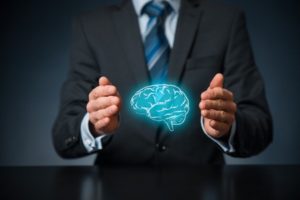
In this article, I will introduce you to the relationship of brains and decision making in mediation. There is a complex process of decision making that goes on inside our heads. Many are familiar with Daniel Kahneman’s description of decision making as involving a System 1 and a System 2 in the brain. I think he simplified the idea for his book, Thinking: Fast and Slow. In reality, there are three independent decision making systems. They are:
- The Automatic System
- The Algorithmic System
- The Reflective System
Kahneman has lumped the Algorithmic and Reflective System into his System 2 typology. However, the distinctions between algorithmic and reflective decision making are significant to mediators and lawyers.
Our brains are the most metabolically active part of our bodies. Our brains consume 20 percent of our energy despite taking up only 2 to 3 percent of our mass. Because neurons are so energy-hungry, the brain is a battleground where precision and efficiency are opponents. We would be paralyzed if we had to reflect on every decision we make. On the other hand, we make bad decisions when we allow efficiency to override precision. It’s a constant struggle that plays out daily in life and in mediation.
The Automatic System
The automatic system (System 1) is composed of certain areas of the limbic system, primarily the amygdalae, and the orbitofrontal cortex. This system is fast, effortless, intuitive, and emotional. It is the system we use most of the time for most of our decisions. It works well in the absence of novelty, uncertainty, ambiguity, or risk. It is prone to significant error otherwise.
The automatic system is developed through the experience of pattern recognition. We build internal cognitive maps of how our world is. These maps are called schemas. When an environmental cue appears that we have seen before, a series of schemas are automatically activated without conscious thought. These schemas are associates with scripts that dictate responses and behaviors. The scripts are largely unconscious too. In general, we navigate through life using our schemas and scripts. As you might imagine, the quality of your automatic decision making is related to the quality of your schemas. This is why education is important. Being educated usually implies development of schemas about the world that are more accurate than say, made-up stories or myths.
Experts heavily rely on schemas. A jazz violinist cannot be pondering the fingering or the next series of notes or how to move the bow when ripping through a fast improvisation. The automatic system has to be sufficiently trained so that all of this occurs instantaneously and without effort. The result otherwise is the sound of dying cats instead of exciting, beautiful music. Where experts, including lawyers, get into trouble is when they fail to recognize the limitations of their automatic systems or where they fail to recognize a new condition that should invoke another decision making system. Over-reliance on the automatic system is prevalent in mediation as the informality of the process and the ritualistic negotiation lull lawyers into mental complacency.
The Algorithmic System
The algorithmic system is located in the prefrontal cortex and is associated with executive function. It is slower and more effortful decision making than automatic decision making. We use algorithmic decision making when we are applying rules to a set of facts. Algorithmic decision making may also be invoked in inductive and deductive logic. What is commonly thought of as intelligence measures algorithmic strengths and capacities.
The Reflective System
The reflective system is composed of parts of the prefrontal cortex and relies heavily on short term memory. The reflective system creates scenarios and hypothetical what-ifs to choose a path or decision. The reflective system is the most metabolically demanding, the most effortful, the most painful, and the slowest of our decision making systems. It is the system that is absent from many mediations when it should be present. In the precision v. efficiency combat zone, this system is precise.
What Is Good Decision Making
How do we go about using this knowledge of brains and decision making in mediation. Good decision making uses the three systems appropriately. Learning how to use each decision making system is a lifelong endeavor. The inability to use all three systems is painfully evident in modern politics, culture, and social interaction.
In mediation, good decision making starts with thorough preparation. Many years ago, as a lawyer representing clients, I actually wrote out my concession strategy and justifications for each concession. I would review the strategy with my client before the mediation. Clients were always amazed at how accurate my “predictions” were. The accuracy came from slow thinking about all of the possibilities, the strengths and weaknesses of the case, opposing counsel, the mediator, etc.
What is not necessarily good decision making is showing up at a mediation thinking you can shoot from the hip. As I mentioned above, the informality and ritual of distributive negotiation lulls lawyers into complacency. This is one of the reasons for the high decisional errors Kiser revealed in his research. Mediations and mediators may be fungible is some ways. However, we are still dealing with uncertainty, ambiguity, and risk. These conditions are not well-handled with a shoot-from-the-hip attitude.
Enough on brains and decision making in mediation for now. In the next blog, I will dive into the nature of intuition, a function of the automatic decision making system, and how it can help or hinder negotiations.
